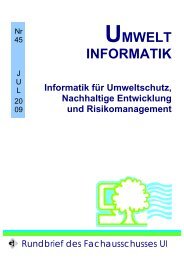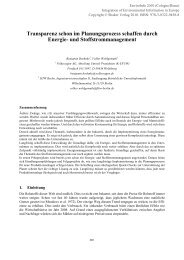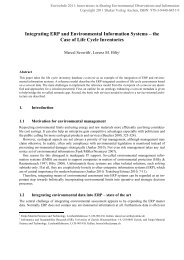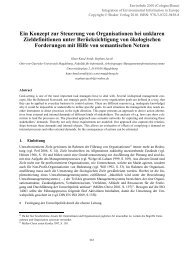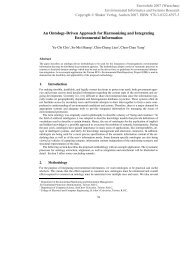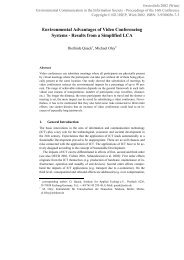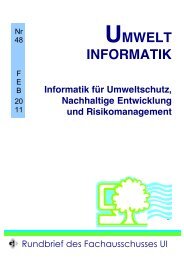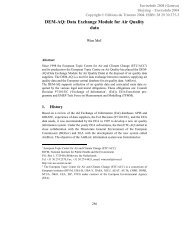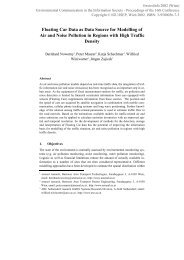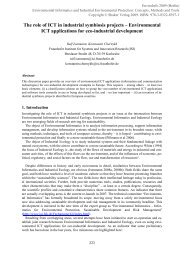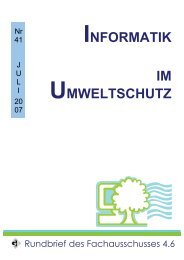162knowledge of those who encounter the problems is not used, then urban places arelikely to rema<strong>in</strong> hostile environments <strong>for</strong> many people. Indeed it is apparent thatmany of the changes which have taken place <strong>in</strong> towns and cities <strong>in</strong> recent years havemade access and mobility more, rather than less, difficult <strong>for</strong> disabled groups likewheelchair users. Research undertaken by Imrie and Wells (1993) showed a widespreadignorance amongst officers about ‘plann<strong>in</strong>g <strong>for</strong> the disabled’. There is, there<strong>for</strong>e,a need <strong>for</strong> <strong>in</strong><strong>for</strong>mation systems and good quality maps that can help plannersassess and compare the effects of plann<strong>in</strong>g decisions on disabled access to urbanspaces, and provide a means of <strong>in</strong>tegrat<strong>in</strong>g the needs of the disabled <strong>in</strong>to urban plann<strong>in</strong>gand design.A more immediate strategy to overcome problems of <strong>in</strong>accessibility is to improvethe mapped <strong>in</strong><strong>for</strong>mation available to the disabled, <strong>in</strong> order to enable them to betterplan and control their own use of urban space. At present there is an unevenness of<strong>in</strong><strong>for</strong>mation targeted at disabled people to assist trip-mak<strong>in</strong>g. Where town guides doexist they often provide little more than lists of services and facilities <strong>for</strong> disabledgroups <strong>in</strong> general. Attention is rarely drawn to those facets of urban places that h<strong>in</strong>deror prevent mobility. Not all towns <strong>in</strong> the UK have access guides and often wherethese do exist they were compiled some years ago and now need updat<strong>in</strong>g. There isno consistency with<strong>in</strong> such guides, <strong>in</strong> terms of their level of detail, range of topics,style, presentation and <strong>for</strong>mat. Typically, most guides only give <strong>in</strong><strong>for</strong>mation on aspectsof access <strong>in</strong>to and with<strong>in</strong> build<strong>in</strong>gs, together with a list services and facilitiestargeted at the disabled, while, there is an absence of <strong>in</strong><strong>for</strong>mation about street environmentsand mobility options. Consequently, people with disabilities are not able tomake <strong>in</strong><strong>for</strong>med decisions about how to move around urban places (especially <strong>in</strong>streets and those public spaces between build<strong>in</strong>gs). The need is <strong>for</strong> <strong>in</strong><strong>for</strong>mationwhich is sensitive to the disparate requirements of different user groups, and, ideally,to the <strong>in</strong>dividual user. The <strong>in</strong><strong>for</strong>mation provided must be <strong>based</strong> more firmly on theperceptions and experiences of the disabled themselves and be more readily accessibleto users. Furthermore, it should be possible to be readily updated, so as to <strong>in</strong>corporatethe often temporary but, nonetheless, severe changes that occur <strong>in</strong> the urbanlandscape.With traditional paper-<strong>based</strong> maps and <strong>in</strong><strong>for</strong>mation, these requirements are noteasily met. Through the use of Geographical In<strong>for</strong>mation Systems (<strong>GIS</strong>), however,the possibility exists to provide both planners and disabled <strong>in</strong>dividuals with up-todate,detailed and customised <strong>in</strong><strong>for</strong>mation to help them plan and manage their accessto urban areas. Provid<strong>in</strong>g this <strong>in</strong><strong>for</strong>mation <strong>in</strong> an <strong>in</strong>teractive <strong>for</strong>m would greatly enhancethe <strong>in</strong>dividual autonomy and quality of life of disabled people.Us<strong>in</strong>g <strong>GIS</strong> it is feasible to capture and <strong>in</strong>tegrate the relevant <strong>in</strong><strong>for</strong>mation at a highlevel of spatial resolution, to model either <strong>in</strong>dividual routes or access surfaces us<strong>in</strong>gmulti-criteria assessment (MCA) techniques, and to present the results <strong>in</strong> map <strong>for</strong>m.Network analysis and Artificial Intelligence (AI) techniques also provide the capability<strong>for</strong> route modell<strong>in</strong>g and route f<strong>in</strong>d<strong>in</strong>g along networks. However, to translate thisCopyright © IGU/ISEP, Wien 2002. ISBN: 3-9500036-7-32504 EI P 906 I2 BealeL.doc 29.08.02
163capability to an operational plann<strong>in</strong>g and <strong>in</strong><strong>for</strong>mation tool, or a route-f<strong>in</strong>d<strong>in</strong>g system,requires a number of problems to be solved. The first of these is to def<strong>in</strong>e the factorsthat actually determ<strong>in</strong>e access and mobility <strong>for</strong> disabled people.2. Def<strong>in</strong><strong>in</strong>g the barriersA Geographical In<strong>for</strong>mation System (<strong>GIS</strong>) has been used to develop, test and apply aroute mapp<strong>in</strong>g tool <strong>for</strong> disabled access <strong>in</strong> urban areas. This model aimed to provide abasis <strong>for</strong> a fully <strong>in</strong>teractive system that will allow wheelchair users to assess, compareand select routes through urban areas, which best meet their <strong>in</strong>dividual circumstancesand needs. Additionally, it has been developed <strong>for</strong> use by urban planners tobetter understand urban morphology from the perspective of a wheelchair user - potentiallylead<strong>in</strong>g to recognition of h<strong>in</strong>drances and improved policy and decisionmak<strong>in</strong>g.It can also be used to help local authorities and disabled groups produce upto-datemaps on access <strong>for</strong> the disabled to urban areas. The model has been testedand applied <strong>in</strong> Northampton, UK.In design<strong>in</strong>g the <strong>GIS</strong>-<strong>based</strong> model and outl<strong>in</strong><strong>in</strong>g the project aims, the demands ofthe end users were considered throughout. The <strong>GIS</strong>-<strong>based</strong> model was <strong>in</strong>tended <strong>for</strong>use by both wheelchair users and urban planners, although clearly the knowledge ofthe subject laid predom<strong>in</strong>ately with one user group. In order to improve access to <strong>in</strong><strong>for</strong>mationpotential a primary aim <strong>in</strong> model development was to create a simple andstraight<strong>for</strong>ward structure so that the <strong>GIS</strong>-<strong>based</strong> model could ultimately be used byboth those experienced and <strong>in</strong>experienced with computers.Four hundred wheelchair users were contacted from across Northamptonshire,England, and <strong>in</strong>vited to complete a postal questionnaire to determ<strong>in</strong>e their perceptionof h<strong>in</strong>drance <strong>in</strong> urban spaces. The sample was designed to be representative of age,gender, level and type of disability and the type of wheelchair used so as not to bebiased towards particular population groups. The questionnaire was organised <strong>in</strong>tofour sections. These covered personal details <strong>in</strong>clud<strong>in</strong>g disability and type of wheelchairmost commonly used; those aspects of the built environment that constra<strong>in</strong> mobilityand access; problems faced when attempt<strong>in</strong>g to travel to and around Northamptontown centre; and facilities regularly used by wheelchair users and what problems,if any, were rout<strong>in</strong>ely encountered. The questionnaire responses provided important<strong>in</strong>sights <strong>in</strong>to the real problems that exist <strong>for</strong> wheelchair users <strong>in</strong> navigat<strong>in</strong>g urbanspaces (Figure 1). A number of focus groups were convened to exam<strong>in</strong>e emergentthemes more rigorously. Dur<strong>in</strong>g the course of each session photographs of obstaclesmost readily recalled <strong>in</strong> the questionnaire were used to stimulate discussion.Copyright © IGU/ISEP, Wien 2002. ISBN: 3-9500036-7-32504 EI P 906 I2 BealeL.doc 29.08.02





